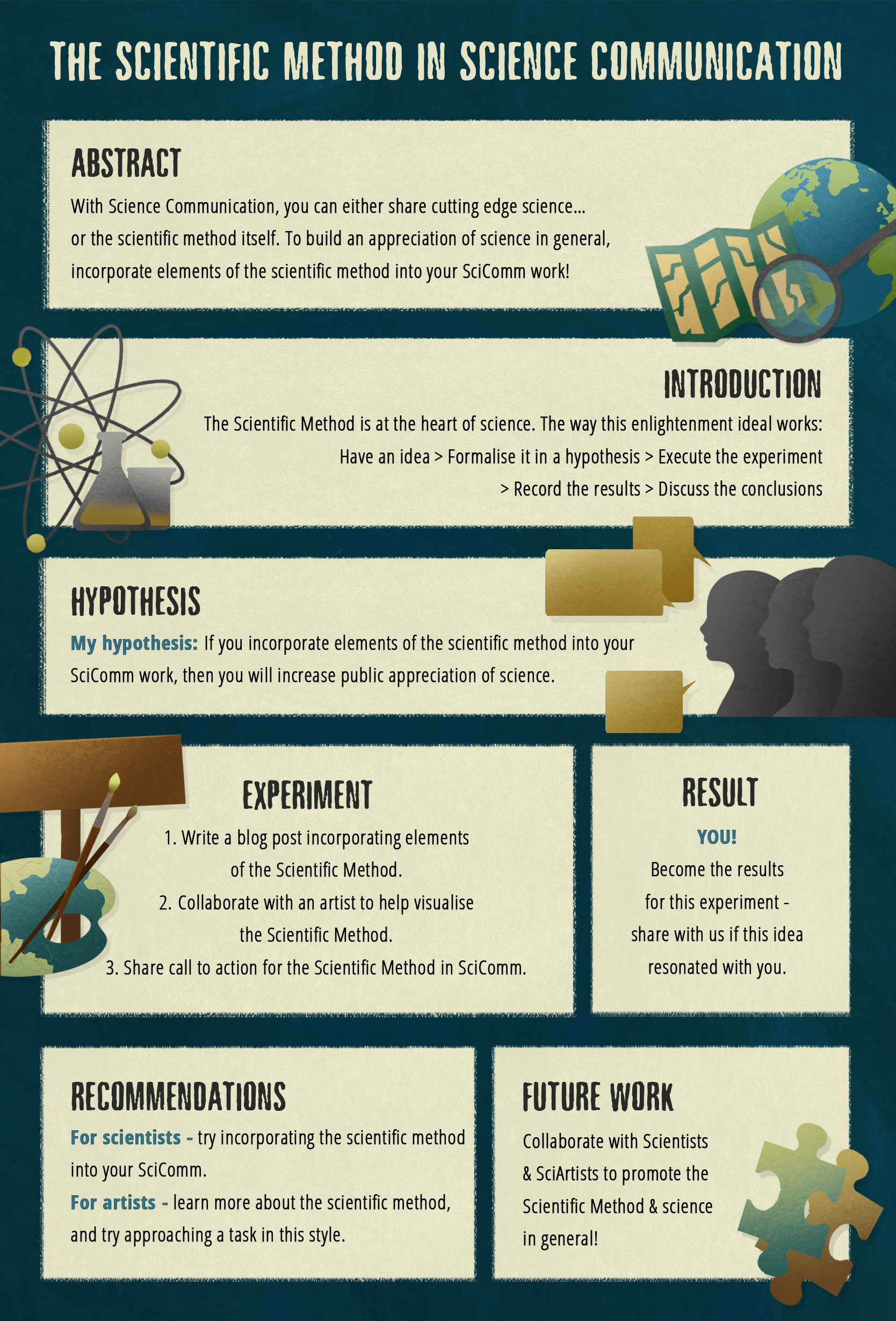The Scientific Method in Science Communication
Abstract:
There’s more than one way to do Science Communication! You can either communicate cutting edge scientific discoveries… or the Scientific Method itself. If your interest & goal is to share new scientific research with the public, then Science Communication is your game. But if your goal is to go one step further and help build a public appreciation of science in general, then you should consider incorporating elements of the Scientific Method into your SciComm work! Infusing the Scientific Method into science communication can lead people into the heart of science.
Introduction:
The Scientific Method is at the heart of science – it is the foundation on which scientific advancement & human enlightenment are based upon. It is the method of being curious & questioning things within & around you, hypothesising their reasons for occurring, experimenting to prove or disprove these reasons, and concluding on the lessons learnt from this process.
Let’s take an example: You have an idea about something – first, formalise it by creating a hypothesis.
If I do *this* → Then I predict *that* will happen.
E.g. If I meditate for 10 minutes every morning this week, my head will feel clearer and sharper on Friday compared to Monday.
Execute the experiment. Record the results along the way. Discuss the conclusions and recommendations at the end. Lay out the future work you plan to do on your meditation practice.
Try out this frame of mind in your everyday life, and see if you gain an extra appreciation of science & scientific thinking in the process.
Hypothesis:
If you incorporate elements of the Scientific Method into your SciComm work, then you will increase the public’s engagement with science as a concept, as opposed to just the content of scientific research.
Experiments:
1. Write a blog post about the incorporation of the Scientific Method into science communication.
2. Collaborate with an artist to help visualise the Scientific Method concept.
3. Share call to action about teaching the Scientific Method to see if it connects with people & illuminates a new perspective on science.
Results:
YOU!
You can become the results for this experiment. Send us a message or leave a comment if this idea of the Scientific Method in science communication resonated with you in any way!
Recommendations:
If you’re a scientist, give it a go to incorporate the Scientific Method into your science communication work. If you’re an artist, keep reading more about the Scientific Method & see if you can approach a future life task in this style. Diligently follow the experiment > Reflect on the results > Hone your next hypothesis based on your past experience > Learn a lesson!
Future work:
Collaborate with other Scientists and SciArtists to help them promote the value of the Scientific Method & science in general!





